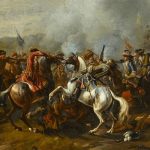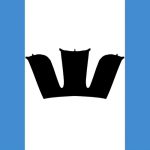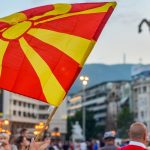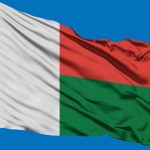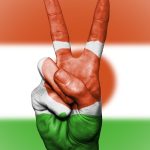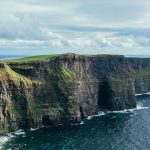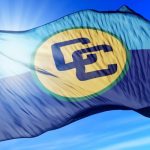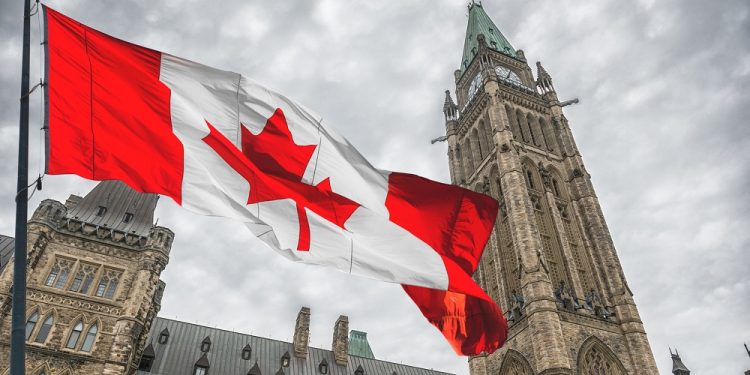
Canada Day
Canada Day is a holiday that’s observed on July 1st and celebrates the establishment of Canada as a country on July 1, 1867. This holiday is also known as Canada’s Birthday and Fête du Canada in French. It was originally known as Dominion Day prior to 1982 but was renamed when Canada’s Constitution was patriated in 1982 by the Canada Act.
Celebrations of this holiday take place not only all over Canada but also all over the world, as Canadians living abroad enjoy celebrating this holiday in their host countries.
A Brief History Of Canada
Canada has a unique and interesting history, so we thought it would be unfair to go into the history of Canada Day without digging into the history of Canada as a country. So we did a considerable amount of research and have come up with the following history. Due to space limitations, we can’t cover every moment of Canadian history, but we can go over some of the main milestones that we feel are the most important.
For the purpose of this article, we’re going to go back to 2,000 BCE with the start of the Woodland cultural period, and it’s a period that’s been known for the indigenous peoples who inhabited the area and their introduction of pottery—an event that separates them from Archaic-stage inhabitants.
If we move ahead a few hundred years, we see the settlement of the area by speakers of the eastern Algonquian languages, including Abenaki and Mi’kmaq peoples. Anishinaabe speakers moved their lands from the Atlantic coast to the central and western Great Lakes. According to their oral traditions, the Ojibwa formed the Council of Three Fires in 796 CE with the Potawatomi and Odawa peoples.
Other ancient peoples extended their reach into this area as well, including the Iroquois Confederacy, the Erie peoples, and the St. Lawrence Iroquoians. Around 1000 CE, the Norse arrived from Iceland and Greenland and formed a small settlement at L’Anse aux Meadows at the northern tip of Newfoundland. The Norse explorer Leif Erikson also explored the Americas during this time—a time that’s called by historians the Viking Age.
After Viking Age explorations of what would eventually become Canada, the Italian John Cabot received letters patent from King Henry VII of England to explore this area. On June 24, 1497, he sighted land in what was probably the Atlantic provinces of Canada and landed at Cape Bonavista, Newfoundland. The areas visited by John Cabot were claimed by the Spanish Crown, who asserted that they had territorial rights to the area. Portuguese explorers and colonizers also visited this region during this time.
In 1524, the French took an interest in the New World, and Francis I of France sponsored Giovanni da Verrazzano’s navigation of the region between Florida and Newfoundland. The hope was that he would find a route that led out to the Pacific Ocean. In 1534, Jacques Cartier planted a cross in the Gaspé Peninsula and claimed the land in the name of Francis I. Pierre Du Gua, Sieur de Mons, was given a North American fur trade monopoly in 1604.
The fur trade would become one of the major economic factors in North America for continued interest in the area. Du Gua employed Samuel de Champlain during his first colonization expedition to an island located near the mouth of the St. Croix River. Their efforts also took them to various locations in the area. In 1605, the St. Croix settlement was moved to Port Royal, and a mere three years later, Champlain would found what is now known as Quebec City. This is one of the earliest permanent settlements in what would become Canada.
Although French settlers were firmly entrenched in parts of Nova Scotia and on the banks of the Saint Lawrence River by the beginning of the 18th century, new arrivals from France had stopped coming to the area from the end of the 17th century, and this allowed English and Scottish settlers to outnumber the French in Nova Scotia and the Southern Thirteen Colonies.
From 1688 through 1763, there were four French and Indian Wars and a couple of additional wars in Nova Scotia and Acadia between New France and the Thirteen American Colonies. When the Treaty of Paris was signed after the defeat of New France in the Seven Years’ War, France renounced most of its rights to the territory in mainland North America. After the treaty, King George III issued the Royal Proclamation of 1763. This organized the new North American empire under Great Britain’s crown and stabilized relations between the Crown and Aboriginal peoples.
During the 1864 Quebec Conference and Charlottetown Conference, the Seventy-Two Resolutions outlined the framework under which the British colonies in North America could be conglomerated into a federation. This led to the formation of the Dominion of Canada on July 1, 1867. “Dominion” was selected to mark Canada’s status as a self-governing colony of the overall British Empire.
During the 1890s, a framework of criminal law was codified, and this resulted in the Criminal Code of 1892. In the late 1890s, the boundary dispute between the U.S. and Canada intensified when gold was discovered in the Yukon. Although Canada had argued that its boundary included the port of Skagway, an arbitration court didn’t see that as the case. The British delegate sided with the U.S., a move that many Canadians felt was a betrayal. Saskatchewan and Alberta were admitted as provinces into Canada in 1905.
In 1965, Canada adopted the maple leaf flag. On April 28, 1967, the World’s Fair Expo 67 came to Montreal, and this coincided with the Canadian Centennial. In 1981, The Canadian House of Commons and Senate passed an important resolution. This resolution requested that the British parliament enact a number of constitutional amendments to end the powers of the British Parliament to legislate for Canada.
In 1982, the Canada Act was passed, and the Queen granted Royal Assent on March 29, 1982. On April 17, 1982, the Queen signed the Proclamation on the grounds of Parliament Hill, and this established the Constitution Act in its full force. This patriated the Constitution of Canada. Canada had, at last, become a sovereign nation, and the Queen’s role as a Canadian monarch was clearly separated from her role as the British monarch.
The History Of Canada Day
In 1867, the British North America Act, now known as the Constitution Act, was celebrated on July 1, 1867. This act confederated Canada, and people celebrated it with bonfires, fireworks, military displays, musical events, and the ringing of the bells at the Cathedral Church of St. James.
The following year, on June 20th, Governor-General Viscount Monck issued a royal proclamation that encouraged Canadians to observe the anniversary of the Confederation. It wouldn’t be until May 15, 1879, that it would be established according to the statute. This is when the holiday was designated as Dominion Day. It was given this name because it celebrated giving dominion status to Canada.
“Dominion” was a term that was used to refer to one of the self-governing countries under the British Empire. Dominion Day wasn’t celebrated on a large scale across Canada, however. Most celebrations of this holiday were on the local level or by celebrations thrown by the governor-general.
This holiday would remain Dominion Day, but there were people who wanted to change it to Canada Day. Most notably, a Quebec member of the House of Commons, Philéas Côté, introduced a bill to rename the holiday to Canada Day. Although this bill quickly passed through the lower chamber, it became stalled in the Senate. The Senate added a recommendation that the holiday should be named the National Holiday of Canada and then returned it back to the House of Commons. This effectively ended up tabling the bill.
Approximately 12 years later, the Canadian government introduced measures to organize and promote Dominion Day celebrations. This effort was led by Prime Minister John Diefenbaker, who requested that Ellen Fairclough, Canadian Secretary of State, put together some events to celebrate the holiday.
This resulted in celebrations that included Parliament Hill Trooping the Colour ceremonies, fireworks displays, and a band concert. Celebrations of this type, however, wouldn’t really catch momentum until 1967 when Canada celebrated its centennial. During this time, multicultural concerts held in Ottawa were televised nationally and became known as Festival Canada.
Although the Canadian government began promoting Dominion Day all over the country using grants given to individual communities, more and more people began to refer to this holiday as Canada Day instead of Dominion Day throughout the 1980s. For some folks, the celebration of Dominion Day was fraught with controversy.
Many people thought that Dominion Day was a holiday that was representative of colonialism, and other people thought that the holiday should be changed because it didn’t translate well into French. On the other side of the debate, some people felt that Dominion Day was simply a misunderstood holiday, and some conservatives saw the movement to rename this holiday as a liberal rebranding of Canadian history.
On July 9, 1982, the holiday was officially renamed Canada Day. Only about 12 members of Parliament were present when the bill was taken up, which ordinarily wouldn’t be enough due to the parliamentary rules regarding the quorum. However, the quorum is only enforceable if a member calls attention to it at the beginning of a session.
As a result, the bill was passed without debate in minutes. Although it did meet some resistance in the Senate, it eventually passed there, too, and the holiday’s name was changed from Dominion to Canada Day on October 27, 1982.
Fun Facts About Canada & Canada Day
Since it’s obvious that Canada Day is a holiday that’s a lot of fun and one that’s celebrated by Canadians and fans of Canada all over the globe, we thought that we’d talk about some of the fun things we’ve discovered about this holiday. Facts that we’re going to share below for everyone to enjoy.
- The word Canada comes from the word Kanata—which is an Iroquoian word that means village.
- French explorers heard the natives use the term Kanata around the area that is now known as Quebec City.
- Even though this holiday was Dominion Day until October 27, 1982, many Canadians referred to it as Canada Day long before then.
- Changing the name from Dominion to Canada Day had a lot to do with the passage of the Canada Act.
- In British Columbia, over 1.2 million liters of beer are consumed over Canada Day weekend.
- Canada Day also coincides with Moving Day in Quebec.
- In 2010, Canada strengthened its citizenship test. This resulted in a failure rate that jumped from 8% to 30%.
- Canada first started appearing on maps in 1547.
- Approximately 86% of Canadians believe they live in the best country in the world. Only 58% of Americans believe they live in the best country in the world.
- As of 2021, Canada has over 38 million people living in it.
- The National colors of Canada are red and white, and the National Anthem is “O Canada.”
Canada Day Celebrations & Observations
Although it’s been said that there are no standard celebrations of this holiday that are homogeneous across Canada, many of the celebrations are much like American 4th of July celebrations. There are parades and carnivals, barbecues, festivals, musical concerts, outdoor public events of all kinds, and fireworks. There are also citizenship ceremonies held on this day.
Because the festivities for this holiday are centrally decentralized, there are no official starting or ending times that are typical for this holiday. International celebrations are also held, and one of the leading ones includes a celebration of hockey and Canadian food in New York’s Central Park.
Another leading celebration is in Trafalgar Square in London. This festival usually has booths for poutine and Tim Horton’s coffee and donuts, and a celebration of hockey. There are also Canada Day celebrations at Bund Beach in China. Of course, that’s only a sampling of the events for Canada Day that are observed worldwide.
